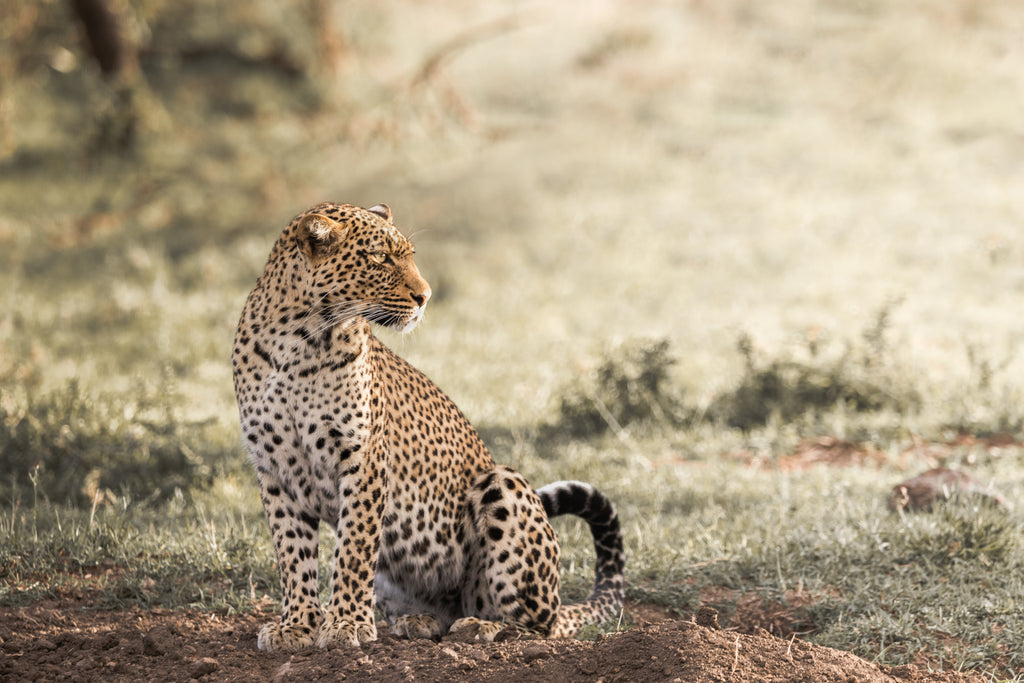A Beginner's Guide to Lighting in Photography

In our previous blog post, we delved into the fundamental world of camera controls, emphasizing their crucial role in capturing stunning photographs. Now, as we embark on the next chapter of your photography journey, we're shining a spotlight on a topic equally vital—lighting. If camera controls lay the foundation, then understanding lighting is the brushstroke that paints the mood, depth, and magic into your images. In this beginner-friendly guide, we'll unravel the significance of lighting in photography, exploring its transformative power to convey emotions, enhance your subject's appearance, and elevate the overall composition of your shots. Whether you're shooting with a smartphone or a DSLR, this post is here to demystify the world of lighting and set you on the path to capturing captivating photographs.
Why does lighting matter?
Lighting in photography serves as the fundamental building block upon which all great photographs are constructed. The work photography actually means "drawing with light" because an image can only be created when light hits the film or sensor.Lighting also shapes the visual narrative of your images. It wields the power to dictate the mood, whispering subtle emotions or boldly proclaiming them in your photographs. With the deft manipulation of light, you can turn an ordinary scene into a masterpiece, unveiling the hidden details and textures while creating striking contrasts. Your subject's appearance can be transformed, making it glow with radiance or casting intriguing shadows, and the overall composition of your shot can be elevated from mundane to mesmerizing. In this section, we will explore how lighting is the cornerstone of photographic artistry, delving deeper into its ability to infuse mood, emotions, and captivating aesthetics into your images.
Types of Lighting
Natural lighting
Natural lighting, often considered a photographer's best friend, encompasses the illumination provided by the sun and diffused ambient light sources. It's the purest form of lighting, and its sources can range from the soft, warm embrace of early morning sunlight to the dramatic, golden hues of the magic hour. The advantages of natural light are manifold; it grants a sense of authenticity to your photos, bathing your subjects in a soft, flattering glow. However, working with natural light also poses challenges, such as the unpredictability of weather conditions, varying intensity throughout the day, and the need for adaptability. Mastering the art of harnessing natural light is essential for any photographer, as it offers a dynamic and ever-changing canvas on which to paint your visual stories.
Natural lighting is not only versatile but can also evoke specific moods and atmospheres depending on the time of day and weather conditions. For instance, the warm, gentle light of sunrise or sunset can infuse your photos with a romantic or dreamy quality, perfect for portraits or landscapes. On the other hand, the harsh, direct sunlight of midday can create dynamic shadows and contrasts, ideal for dramatic and high-energy shots. Understanding these nuances of natural light and learning to work with its variations is essential for photographers looking to harness its potential fully. While it may require patience and adaptation, the rewards of capturing stunning, naturally lit photographs are well worth the effort.
Artificial Lighting
Artificial lighting is a powerful tool in a photographer's arsenal, offering precise control over the illumination of your subjects. There are two primary sources of artificial lighting: flashes and continuous lights. Flashes, like speedlights or studio strobes, emit a brief burst of intense light when triggered, making them ideal for freezing fast-moving subjects or adding dramatic highlights and shadows. Continuous lights, on the other hand, provide a constant and steady light source, allowing you to see the lighting effect in real-time as you compose your shot. These can come in the form of tungsten, LED, or fluorescent lights and are often used for video recording or in situations where a constant light source is preferred.
The choice to use artificial lighting depends on various factors, including your creative vision and the specific demands of your photography. Artificial lighting can be invaluable in situations where natural light is insufficient, such as shooting indoors or in low-light conditions. It also provides consistency and control, ensuring that you can recreate specific lighting setups for product photography, portraits, or studio work. Additionally, artificial lighting allows you to experiment with different lighting angles, colors, and intensities to achieve the desired mood and style for your photos. When using artificial lighting, modifiers like softboxes, reflectors, and diffusers play a crucial role in shaping and controlling the light. Softboxes soften harsh light, creating flattering and even illumination for portraits, while reflectors bounce and redirect light to fill in shadows or add highlights. These tools enhance your ability to sculpt the light precisely as you envision, making artificial lighting a versatile and indispensable aspect of photography.
Direction of Light
Front lighting
Front lighting is a lighting technique in which the primary source of light is positioned in front of the subject, illuminating it evenly and directly. This approach is often favored for its ability to create well-lit, shadow-free images, making it especially suitable for scenarios where you need to capture all the details of a subject. Front lighting provides an even distribution of light across your subject's features, minimizing harsh shadows and highlighting facial expressions or product details with clarity.
However, front lighting has its potential drawbacks, one of which is its tendency to create a sense of flatness in your photographs. Since the light comes from directly in front of the subject, it doesn't create significant shadows or depth. This can result in a lack of dimension and texture in the image, making it appear two-dimensional and less visually engaging. Photographers often use other lighting techniques, such as side or back lighting, in conjunction with front lighting to add depth and drama to their shots, depending on the desired effect and mood of the photograph.
Side lighting
Side lighting is a lighting technique that introduces the light source from the side of the subject, rather than directly in front or behind it. This approach can work wonders in photography by adding depth and texture to your images. Side lighting casts shadows that highlight contours, textures, and three-dimensional aspects of your subject, creating a sense of volume and drama. It can accentuate details like the rugged texture of a landscape, the sculpted features of a portrait, or the intricate patterns of still life subjects. Side lighting is particularly effective when you want to emphasize the shape and form of your subject, adding a sense of dimension and creating a visually compelling composition. It's a technique often employed in outdoor photography during the golden hours of sunrise or sunset, when the angle of the sun's rays naturally lends itself to side lighting, enhancing the beauty of the scene.
Backlighting
Backlighting is a captivating lighting technique that involves positioning the primary light source behind the subject, shining directly towards the camera. This unique approach has the remarkable ability to create stunning silhouettes and captivating halos around your subject. When used effectively, backlighting can transform an ordinary scene into a visually striking and ethereal composition. It's particularly effective when shooting subjects with interesting outlines or intricate details, as it emphasizes their contours and produces a beautiful, luminous glow. Backlighting is often used during sunrise or sunset when the sun's rays are soft and warm, enhancing the enchanting atmosphere of the image. It's also a technique employed to capture the natural radiance of translucent subjects like leaves, petals, or backlit hair, resulting in an almost magical, dreamlike quality in the final photograph.
Quality of light
Understanding the quality of light is fundamental to achieving the desired atmosphere and mood in your photographs. Light can be broadly categorized into two main qualities: hard light and soft light.
Hard light is characterized by its intensity and directness. It produces sharp, well-defined shadows with high-contrast edges. This type of light is often found in situations where the light source is small, such as direct sunlight on a cloudless day or a single, unmodified artificial light. Hard light is suitable for creating dramatic and dynamic images. It can bring out texture and detail in subjects, especially those with rugged or pronounced surfaces, like rock formations or architectural elements. Photographers often use hard light to emphasize fine lines and create strong contrasts, which can work exceptionally well in black-and-white photography or when seeking a bold and impactful look.
Conversely, soft light is characterized by its gentleness and diffuseness. It produces subtle, gradual transitions between highlights and shadows, resulting in minimal contrast and smooth, flattering illumination. Soft light is typically achieved when the primary light source is large and the light is diffused or scattered before reaching the subject. It's preferable in scenarios where a more flattering and natural appearance is desired, such as portrait photography. Soft light minimizes harsh shadows and reduces skin imperfections, making it ideal for capturing the beauty and nuance of faces. Overcast skies, window light, and diffused studio lighting setups are common sources of soft light, and they are often used to create a soft, dreamy, and romantic ambiance in photographs. Understanding when and how to utilize both hard and soft light is essential for photographers seeking to harness the full potential of light in their work.
Start to Play with Light
Mastering the art of lighting in photography is a journey that requires patience, keen observation, and lots of practice. Here are some essential tips to get started:
Begin by observing the quality, direction, and characteristics of light in your surroundings. Take note of how it interacts with objects, casting shadows and highlights. Practice regularly, experiment with various lighting conditions, and review your images to understand how different types of light impact your subjects. The more you practice, the more you'll develop an instinct for choosing the right lighting for each situation.
Experiment with different types, directions, and qualities of light: Don't be afraid to experiment with a wide range of lighting techniques. Try using natural light sources like sunlight, shade, or diffused window light to see how they affect your subjects. Explore various directions of light, including front, side, and back lighting, to understand how they influence your composition. Additionally, experiment with different qualities of light, from hard to soft, to achieve the desired mood and atmosphere in your photographs.
By following these tips and consistently refining your lighting skills, you'll be well on your way to capturing captivating and well-lit photographs that convey the emotions, mood, and stories you envision.
Conclusion
As we conclude this exploration of lighting in photography, it's crucial to recognize the pivotal role that light plays in the creation of captivating and memorable images. We've uncovered how lighting serves as the very foundation of photography, allowing you to set the mood, convey emotions, and enhance the overall composition of your shots. From the gentle embrace of natural light to the precise control of artificial lighting, and the artistic choices of front, side, and back lighting, the possibilities are endless. Understanding the qualities of light, whether it's hard or soft, empowers you to make informed decisions that align with your creative vision. With these fundamental principles in your toolkit, you're well-equipped to embark on your photography journey and continue your quest for stunning visual storytelling.
Now that you've gained insight into the key concepts of lighting in photography, it's time to put your newfound knowledge into practice. Grab your camera, venture out into different lighting conditions, and start experimenting. Observe how light interacts with your subjects and environment, and don't be afraid to embrace the beauty of both natural and artificial light sources.
Stay tuned for our upcoming blog post, where we'll dive even deeper into the exposure triangle, unlocking the secrets to achieving perfect exposure in your images. Remember, photography is not just a skill but a lifelong journey of exploration and creativity, so keep capturing the world through your lens.

Leave a comment